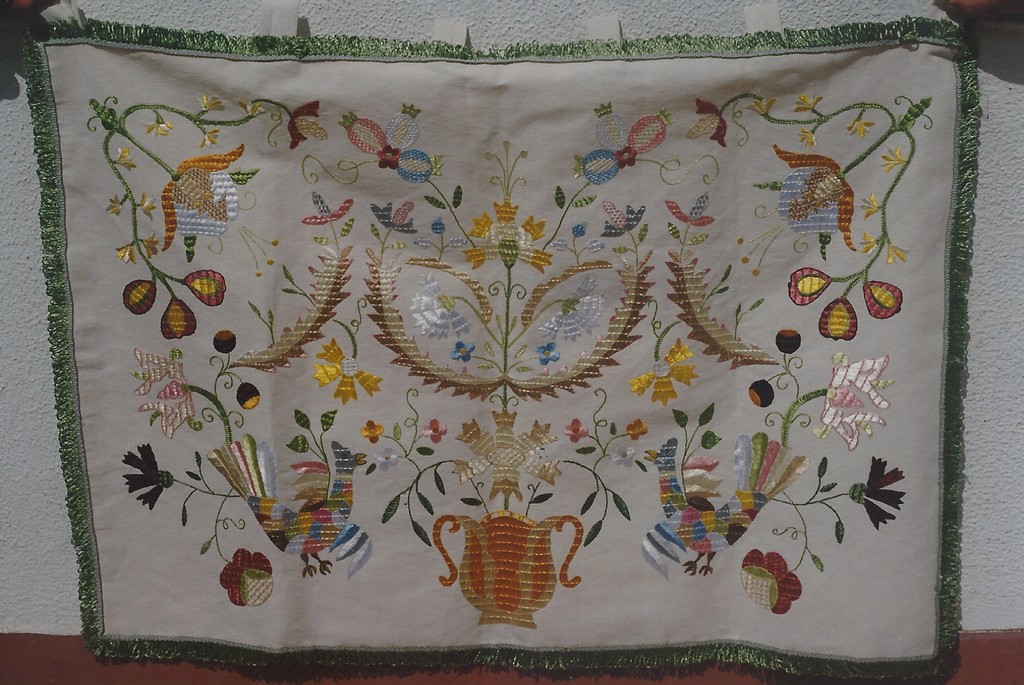BEDS

As already mentioned, when, at the end of the 30's the production of the Castelo Branco embroidery was re-launched, all the silk embroidered bedspreads that could be found in the region were considered as adequate models and their elements were used in the new compositions, becoming part of, defining and identifying all the workshop production from the XX century until nowadays. Proof of this are the drawings that exist in the Francisco Tavares Proença Júnior Museum, which originated in the Mocidade Portuguesa workshop - as well as all the others that were produced there, and the drawings produced in the Mother House, the workshop of Elísio José de Sousa. There are also drawings made from these two main sources (the workshops of the Mocidade Portuguesa and the Casa Mãe) by one or another embroiderer, which, however, are not far from those models.
In the Casa Mãe, the workshop of Elísio José de Sousa, which had so much responsibility in the diffusion of Embroidery and in the enlargement of its market area, the designs were made with even more freedom, creating designs in which several typologies were mixed, changing the axiality of the patterns, introducing motifs with the greatest liberality, from architectural elements, in great profusion, to icons and territorial references or even animals from the African fauna.
Its first teacher, Deolinda Riscado, from Escalos, after leaving the Mother-House, created her own workshop there, giving birth to a true "School" that, more than 50 years later, explains the strong core of embroiderers that still exists there today, much influenced by the aesthetics defined in the workshop of Elísio José de Sousa.
It is in the understanding of this composite and heterogeneous situation that we will present the motifs that can be admitted in the Castelo Branco Embroidery, used and sedimented after more than 80 years of production.
